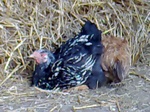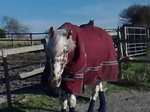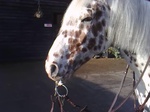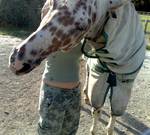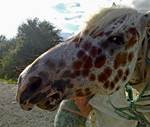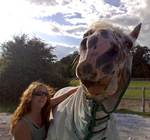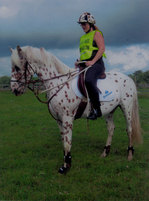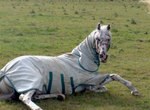Well, Sunday April 26 2009 dawned and I was so nervous! My friends Ann and Badr had been encouraging me to go to an in-hand show with Ann and her beautiful Arab horse, Azzi.
For those of you that can’t be bothered to read more and just want to see the photos, check out:
Pete’s: HERE
Frank’s: HERE
Re being persuaded to go to the show in the first place, Badr had given me a lesson in the “art” of in-hand showing. Well I’ve done working hunter pony and other ridden showing, showjumping and eventing - even Prince Phillip Cup! But all of that was prior to about 1987 when I had my nasty riding accident that put me in hospital. I had since done some judging of working hunter pony and showjumping classes, but not judged since 1994. But the one thing I’ve never done is in-hand showing! One thing I did find out is that I am definitely better coordinated (well, I like to think so!) on a horse than running beside one!
Anyway, Badr was really patient with me - it never occurred to me that you’d have to run that fast on the ground to make sure your horse is really trotting out to his full potential! And I am not the lightest weight lady any more
I’d also spent some money at Robinsons on some in-hand showing gear: a nice in-hand bridle with brass clincher brow band and buckles and chain lead attachment thingy, white jods and shirt, tie - all the bits of horse show clothing that, if I did still have them, I’d never be able to fit into any more!
So the day dawned. Rolly hadn’t been loaded since he arrived in a massive horse lorry from Germany, so we played with them in Ann’s horsebox a couple of days before the show. Rolly, of course, was great to load - no problems (long may that last!) - except the stress made him very sweaty so he was rather disheveled on our arrival at the showground at Plumpton College in East Sussex. And we found I was due to go on in just a few minutes. So Ann and our other friend, Sara, kindly organised Rolly leaving me to organise getting myself organised!
..and into the ring for the first class we went: the spotted/coloured horses in-hand class. Once I was in there, my nerves went as I was so focused on not letting Rolly down. So we really strutted our stuff and came second! Rolly took it all like an old-timer - of course he did breed society shows and gradings when he was with his breeder, but that was a few years ago!
The next class was the “foreign breeds” class - by this time I was quite happy with the whole thing, and my dear husband, Pete, and best mate, Frank, were there taking photos from the sidelines making me - and Rolly I think - feel rather like stars! …and we couldn’t believe it - we won!
When the judge came up to give Rolly his apple, rozette and little trophy, she gave me some great advice in a very tactful way. I have about 5 ear piercings each side and a nose ring, and was wearing some rather jazzy tinted glasses (albeit prescription). She said that all this is rather a no-no and I made her laugh with “what, you mean the bling”? So at least that will prove useful in our next outing - I must just tone down a bit!
The worst thing that happened was that my nice new boots gave me a horrid blister on the back of my heel due to all the running!
But I was so proud of Rolly and can’t wait until our next outing!

